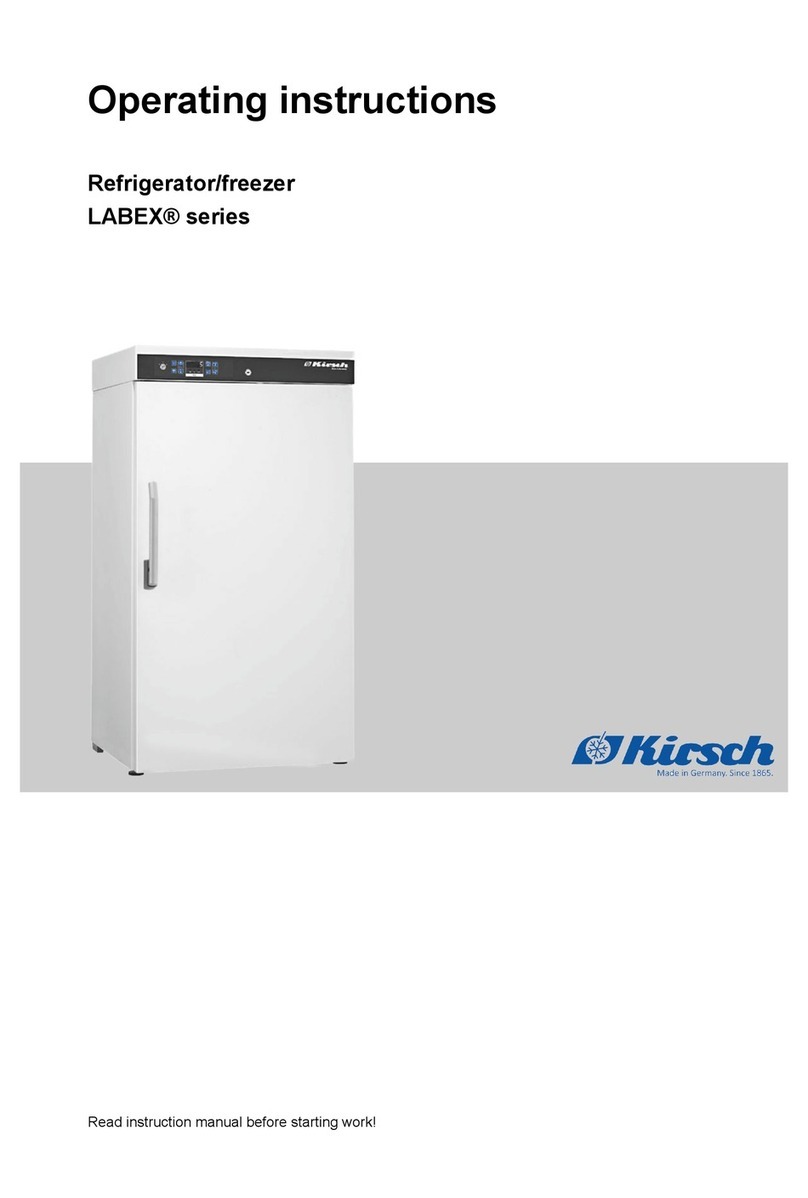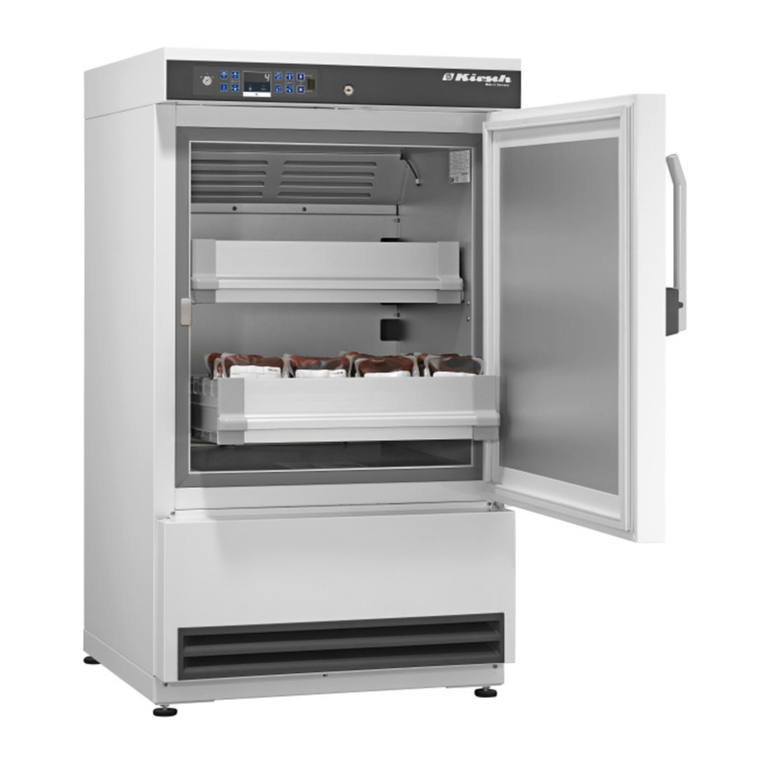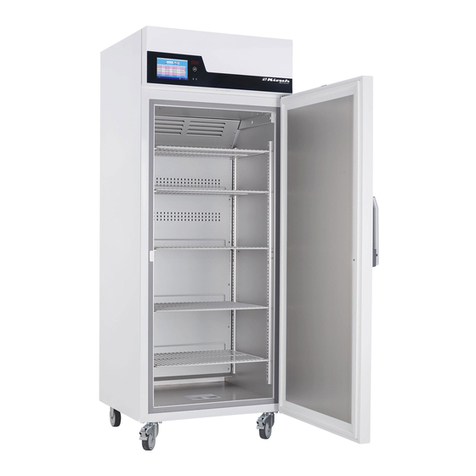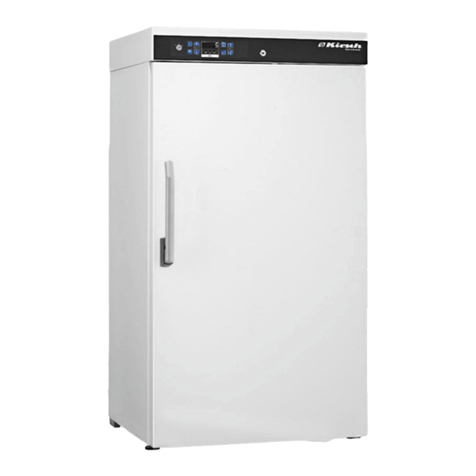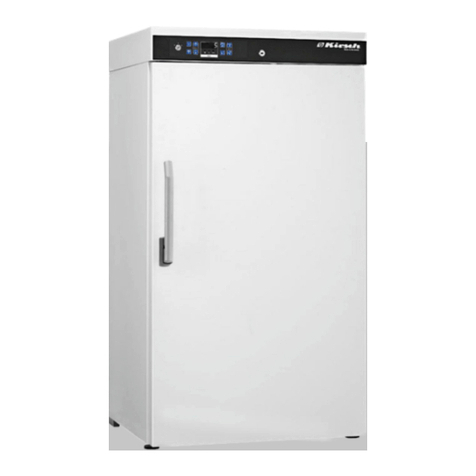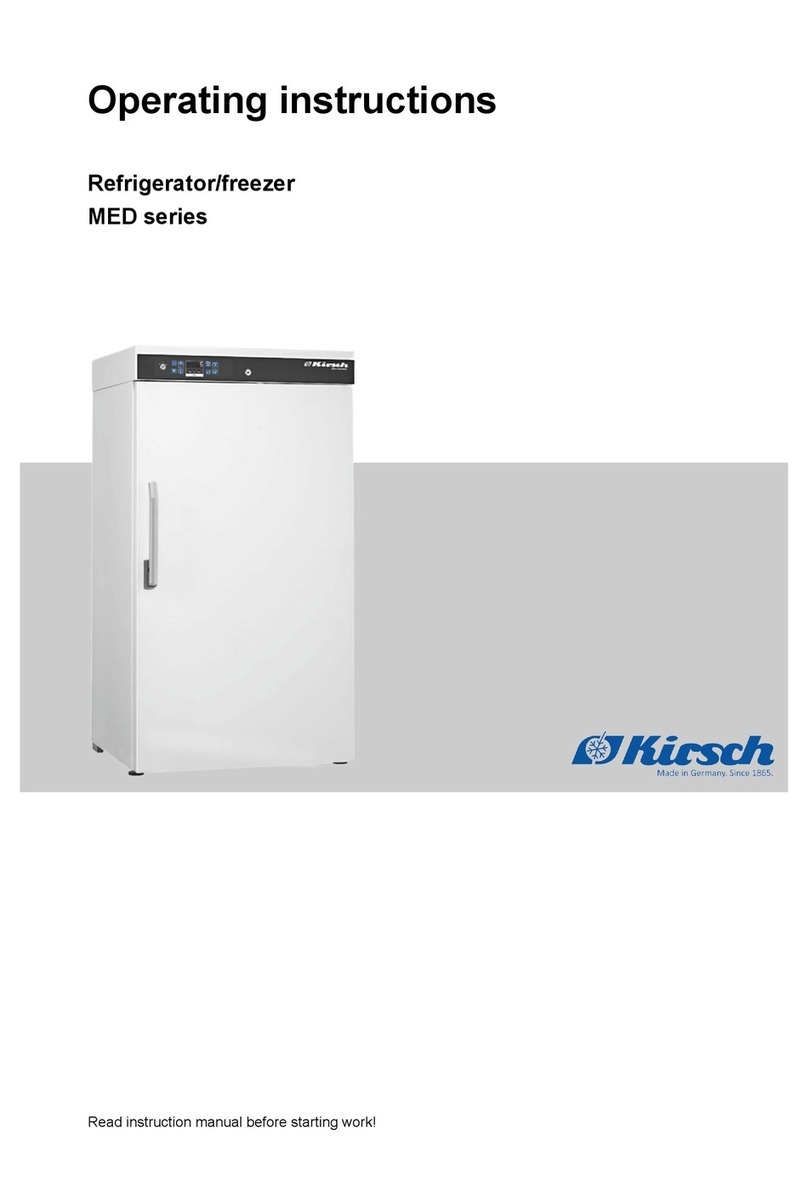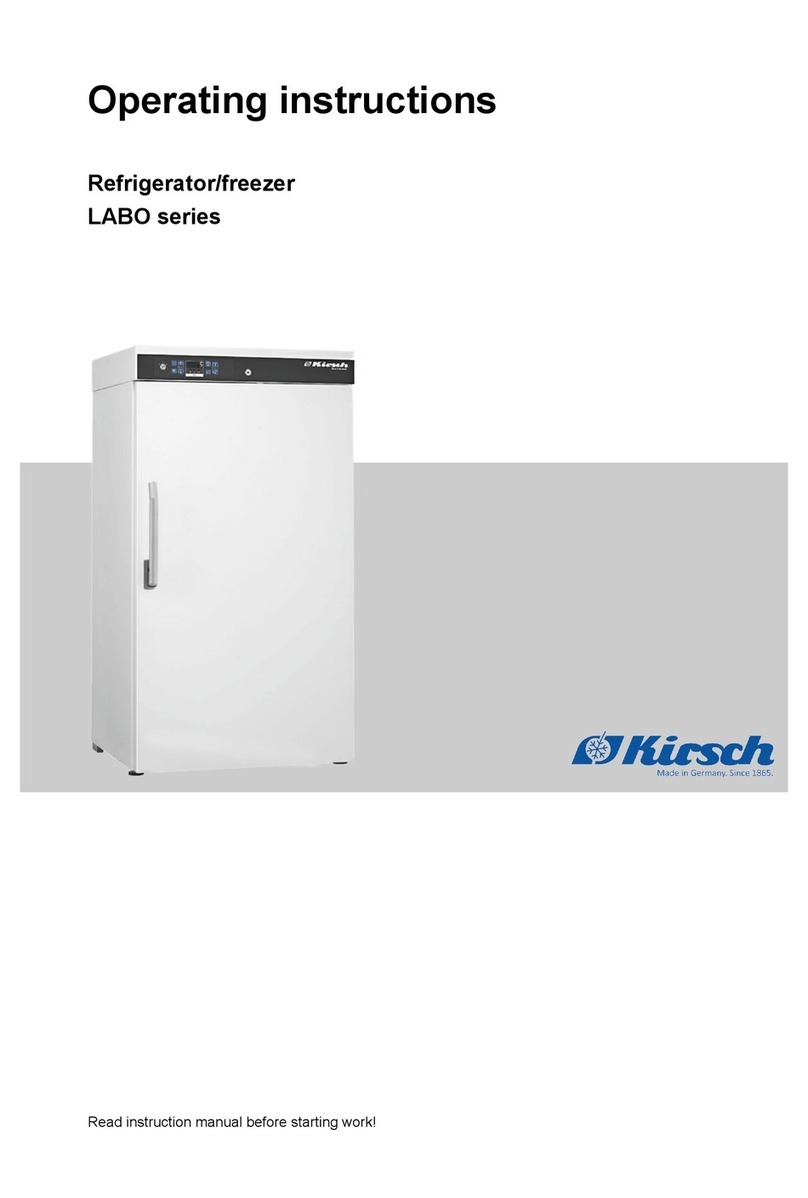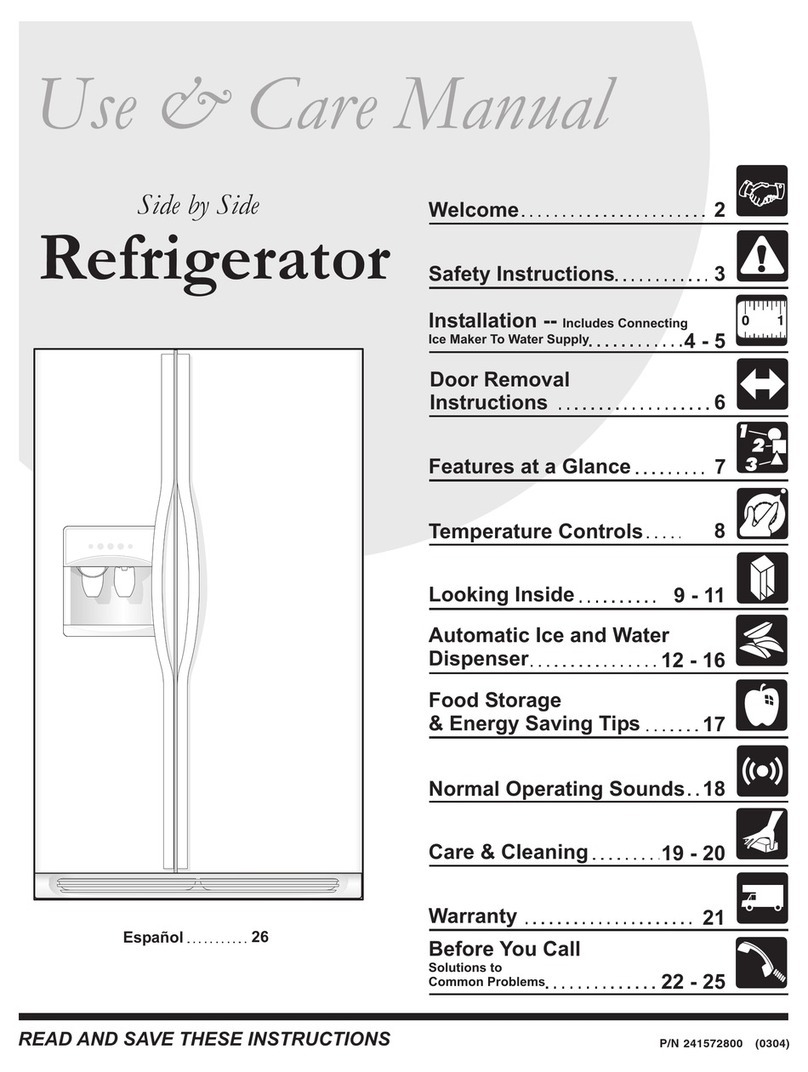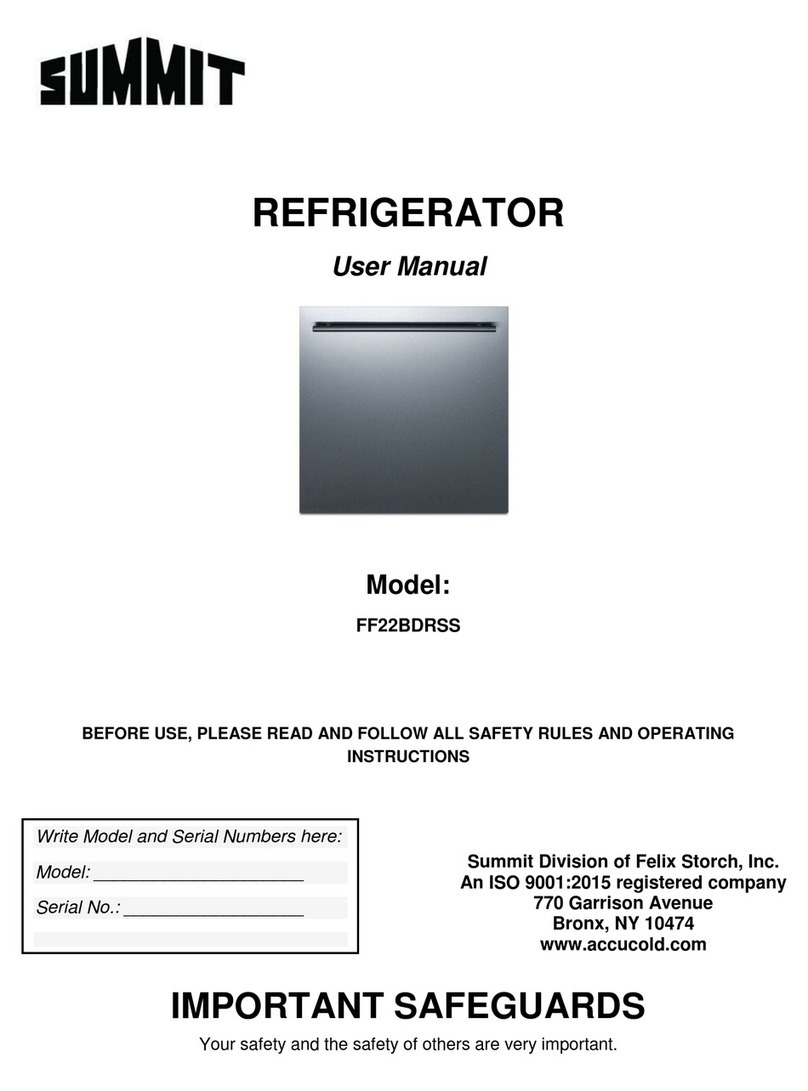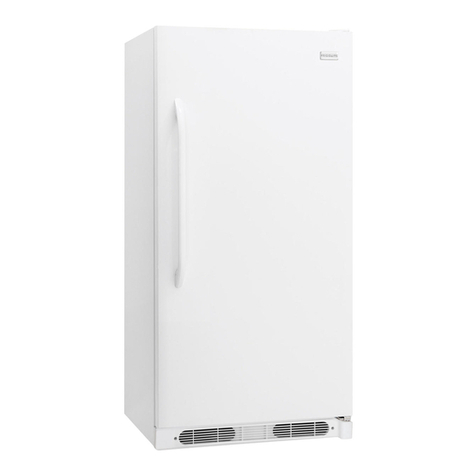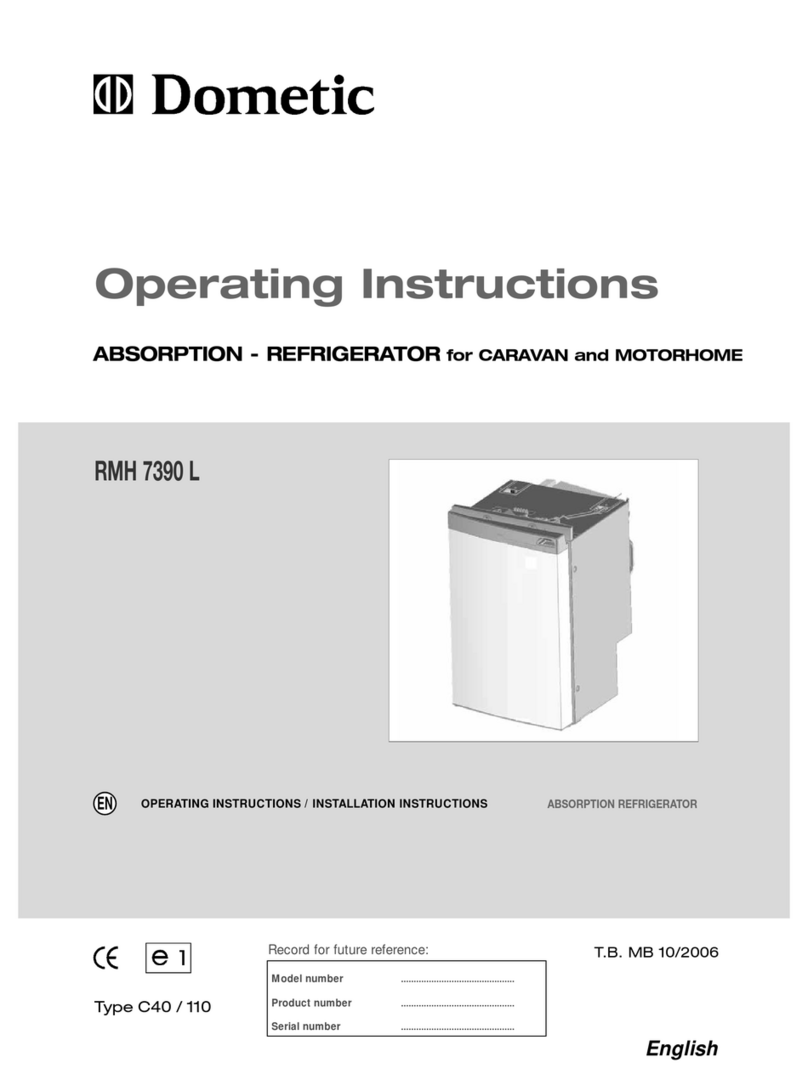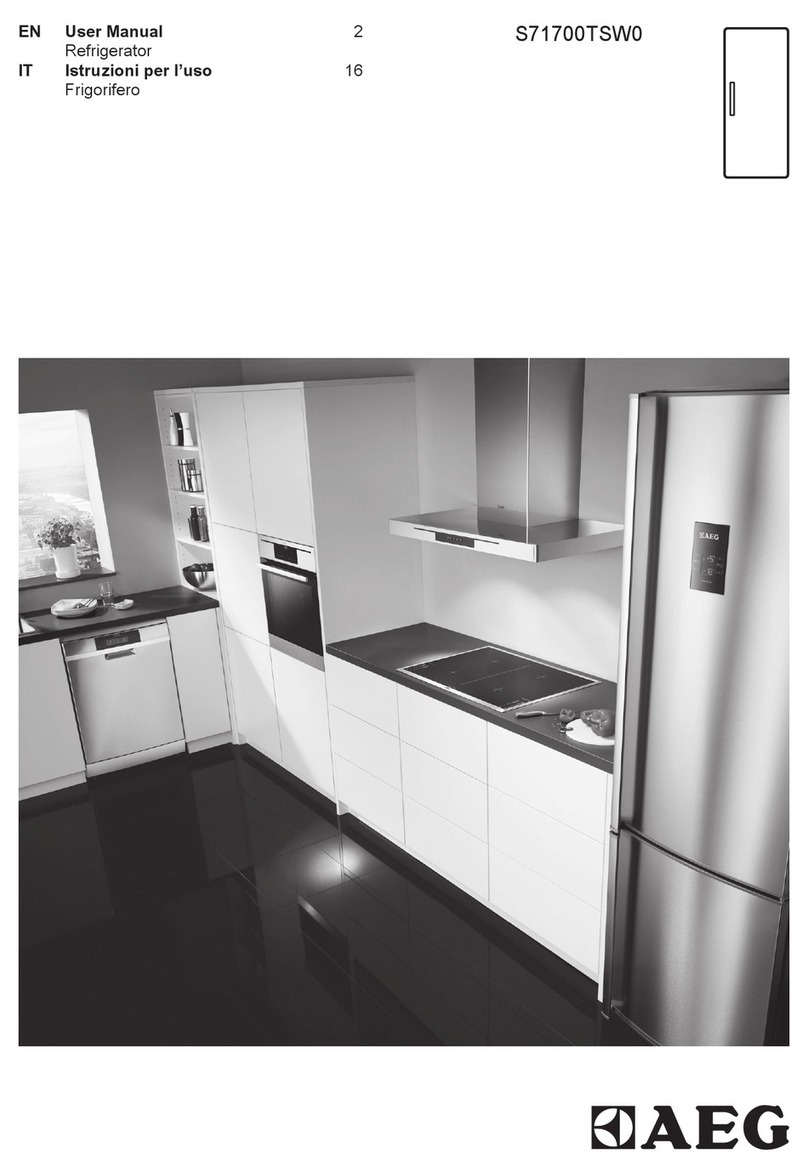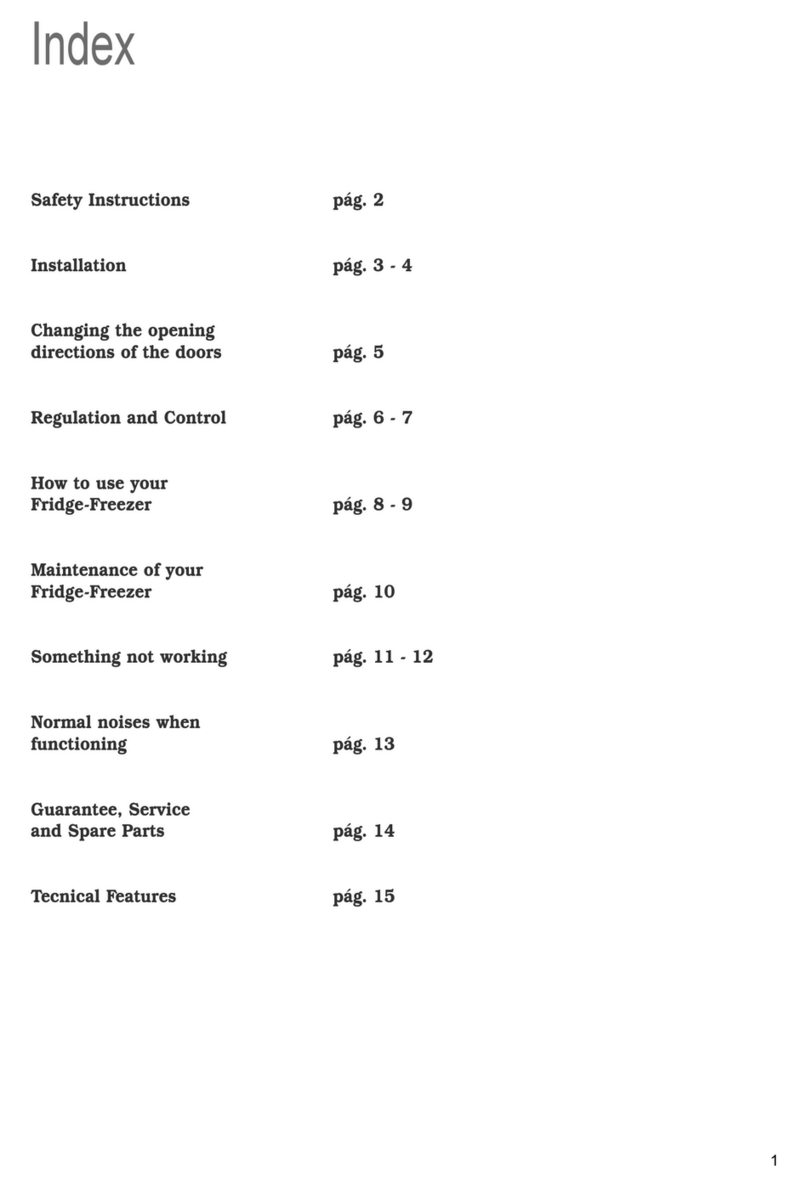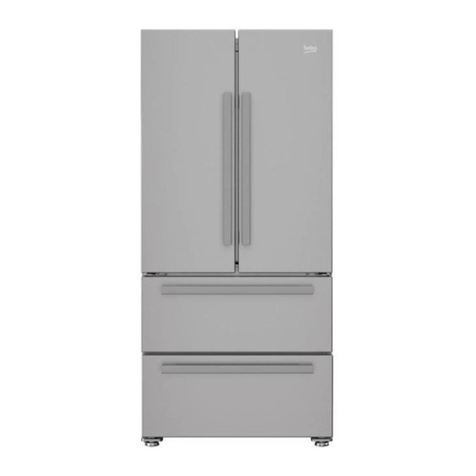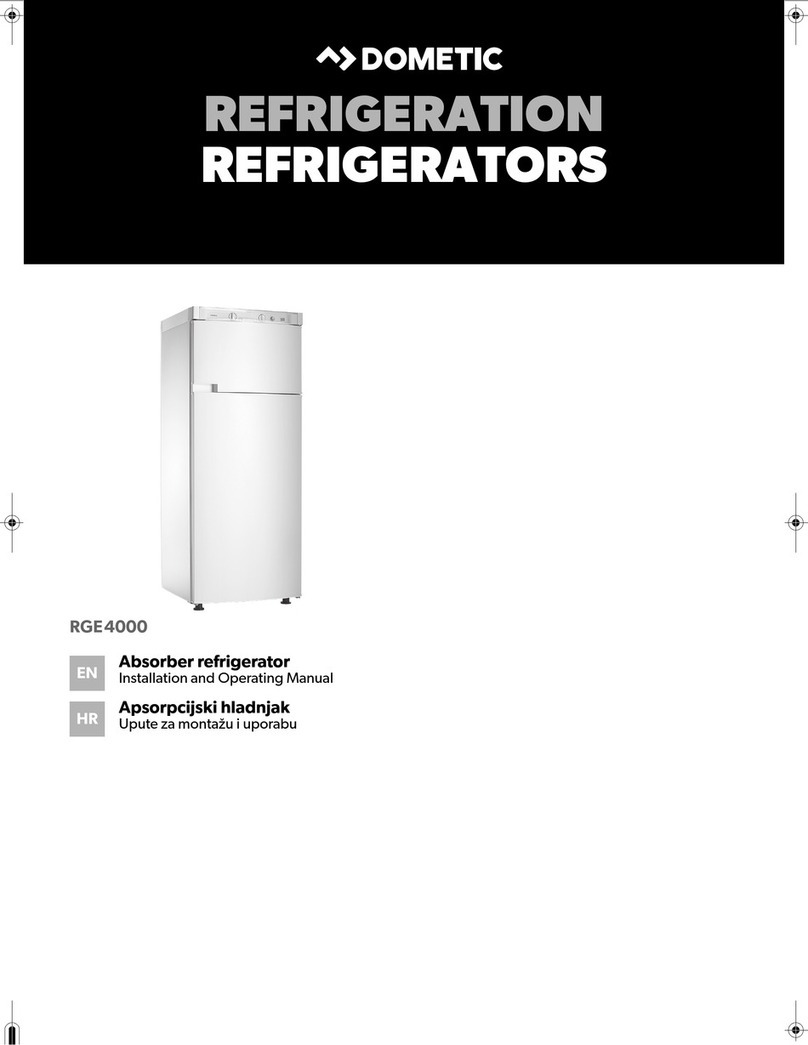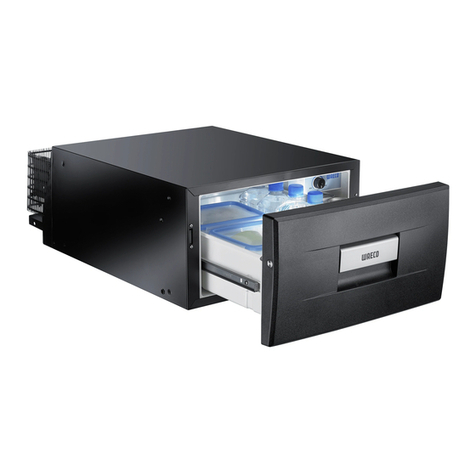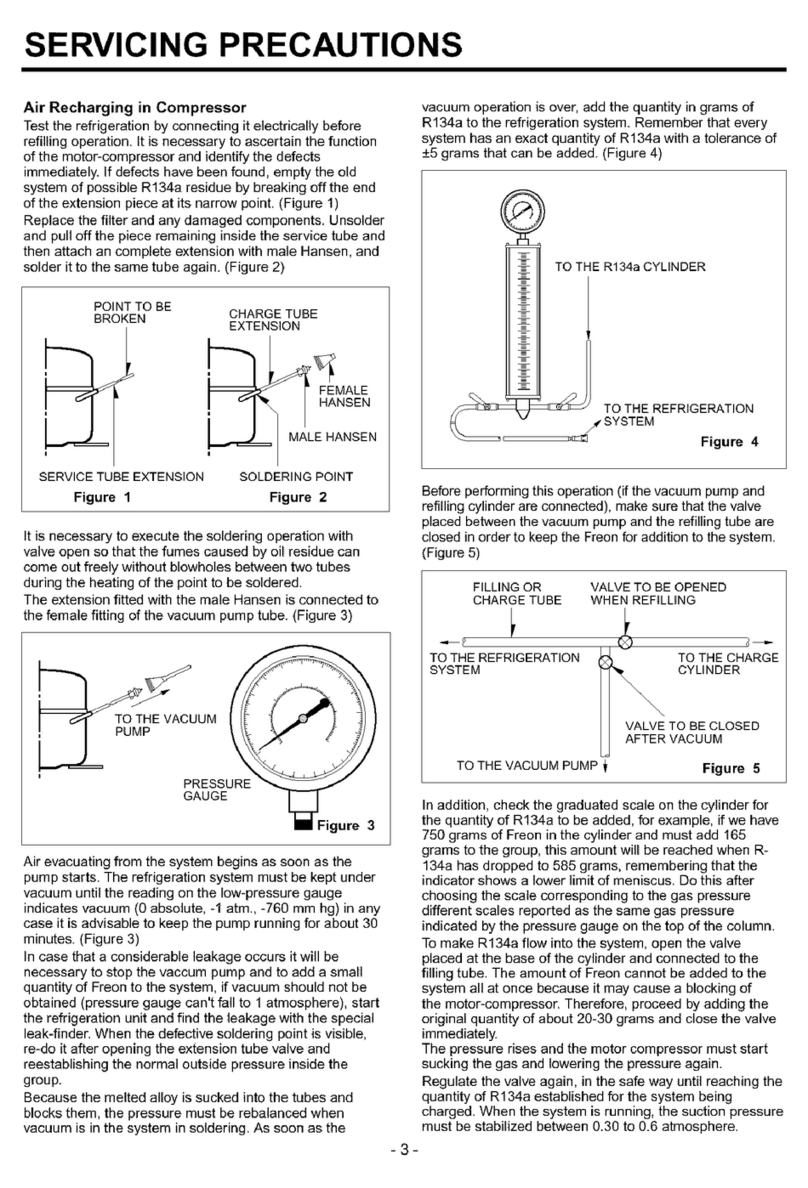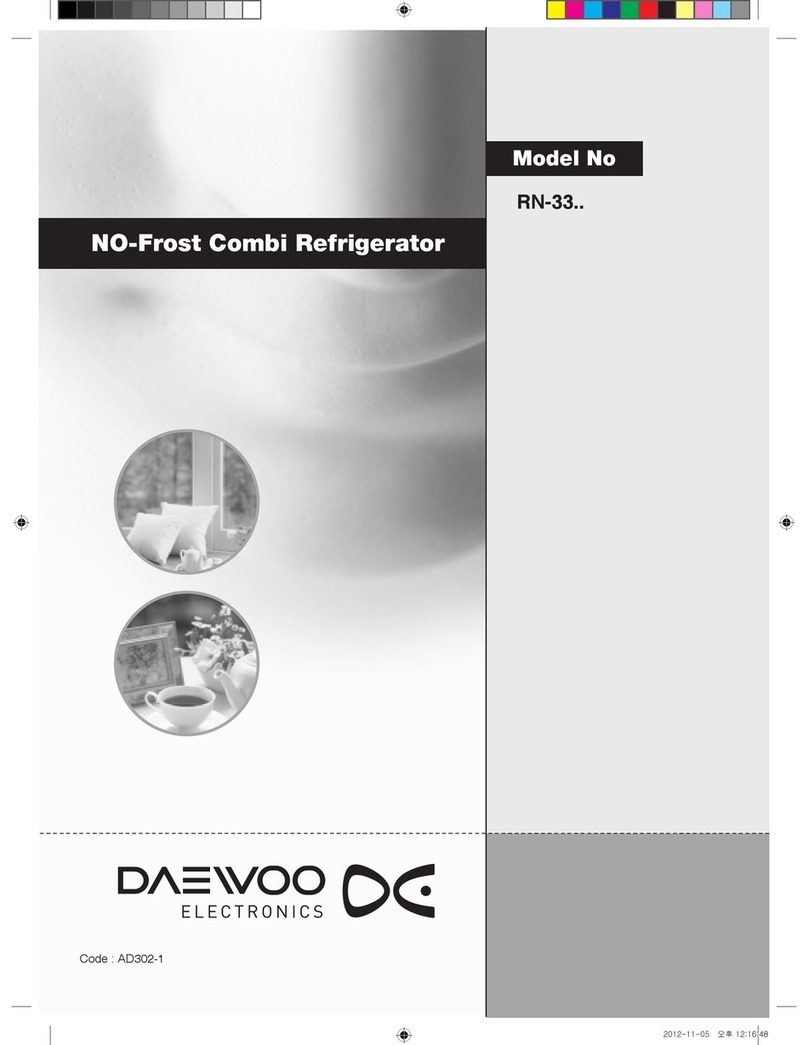3/12
After being switched on the temperature alarm is not set until the reference value has been reached or after 2 hours.
This gives the cooling system the opportunity to reach the working temperature range without the alarm being triggered.
If the temperature falls below or rises above the respective set temperature thresholds, an acoustic signal is sounded in the operating
unit, the remote warning contact is triggered and the current temperature flashes alternately with the fault message in the display 4 (see
fault and status messages).
The alarm can be switched off using the button 5. If the alarm status is still not eliminated after this, the alarm will sound every 30 min-
utes. If in the case of an alarm state the alarm sound is not switched off and the alarm state is automatically eliminated, the alarm
sound goes off but the display continues flashing to show that an alarm state has been triggered. The flashing can be switched off by
pressing button 5.
There are 2 buzzers on the control board which are activated in the event of communication problems between operating unit A1 and
control and monitoring unit A2. This alarm can only be switched off for 24 hours by being separated from the mains (remove the plug). If
the fault is not eliminated within this time, the internal buzzer is switched on again. The same applies for fault messages F90-F93 (see
fault and status messages).
Delayed temperature display according to the sample bottle
The temperature display in the alarm circuit is showed subdued according to a sample bottle. Adaptation to the size of the sample bottle
can be made using the parameter A12. A setting of 100 corresponds to a full sample bottle à 250 ml. A setting of approx. 65 corre-
sponds to a half-size sample bottle and a setting of 1 corresponds to a quarter-size sample bottle. There is no linear connection in the
selection of the numerical values.
Alarm test function:
The digital display is delayed in according to a sample bottle with 250 ml liquid. To carry out the alarm test mode the delay must be
switched off.
Access into the alarm test mode (air measurement):
Turn the key 1 to position P. Press the button 6 and 13 together for approximately 4 seconds until a decimal point appears in the dis-
play.
Now the warning system can be tested through heating up of the black probe, as soon the display reaches the upper threshold, the
acoustic warning will sound and the display will flash, the potential free contact will trigger.
After switching back the key to position 1 the display 4 shows the last measured delayed temperature.
Min/max memory
The min/max memory stores the highest and lowest temperature values displayed. The min memory can be deleted by simultaneously
pressing buttons 8 and 5, the max memory correspondingly by pressing buttons 3 and 5. The display indicates 4 dashes ("----") to con-
firm deletion.
When switched on, the system is given the opportunity to reach the reference value C1. The min/max recording only begins once the
reference value has been reached or after 2 hours.
Alarm circuit
If the temperature reaches the warning threshold, the alarm circuit intervenes in temperature control. If the temperature is too low, the
compressor circuit is interrupted by relay K7. The temperature then settles at the lower warning threshold A2.
Fault message and buzzer
If an alarm is recognised, it is displayed after the setting in A15 and/or the buzzer switches on. The buzzer sounds intermittently, i.e. it is
switched on and off alternately. Which message appears on the display is listed in the fault and status message table. The fault mes-
sage itself is displayed alternating with the current temperature. If more than one fault has occurred, they will be displayed alternately,
whereby the current temperature always appears between, in other words, for example: E0 –Temperature - E1 –Temperature –E0 –
Temperature–E1 –Temperature –E0 –etc.
Independently of this, the alarm is signalised via alarm relay K9 and the LED lights up in the operating unit. If a temperature alarm has
to be confirmed after A14, the alarm remains in the display, even when the temperature has reached the valid range again. In this case,
the LED and the alarm relay K9 are switched off since the alarm is no longer present, but the buzzer and/or display have to be con-
firmed.
Comparing actual values/display values
An actual value comparison of the control unit must always be carried out if the interior temperature measured does not correspond to
the temperature shown in the display or the reference value setting. This must also be carried out when the control board or the sen-
sors F1 or F3 are replaced. The interior temperature should be measured in the centre of the interior if possible to achieve the greatest
possible precision.
Select the parameter list PA0 as follows:
Turn the key switch to position P.
Press buttons 3 and 8 for 4 seconds until PAO appears in the display.
Press button 12, d1 appears in the display.
Use button 3 to select: H5 = Control sensor (F1)
H6 = Display.
Example: parameter H5, control sensor.
If the interior temperature is too warm, adjust to the plus range under H5. If the interior temperature is too cold, adjust to the minus
range under H5.
Example: parameter H6, display.
If the temperature displayed is too warm, adjust to the minus range under H6. If the temperature displayed is too cold, adjust to the plus
range under H6.
